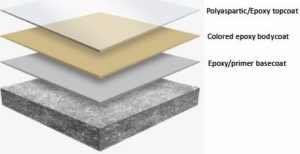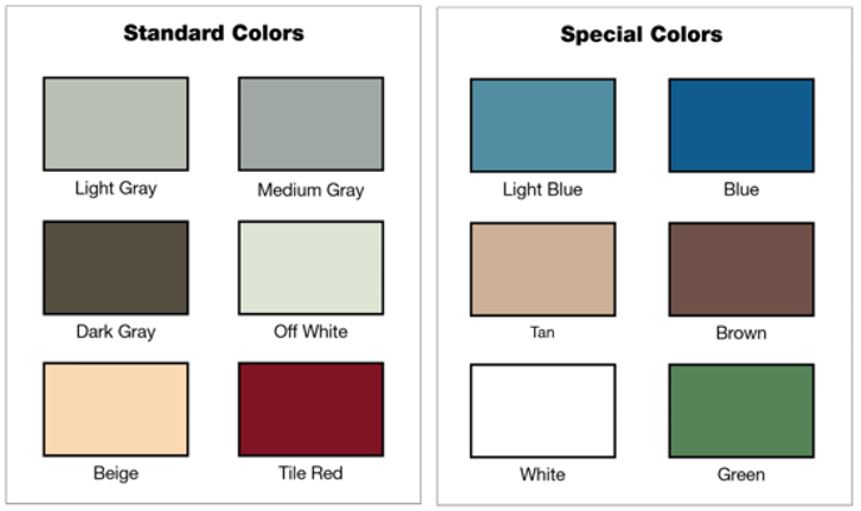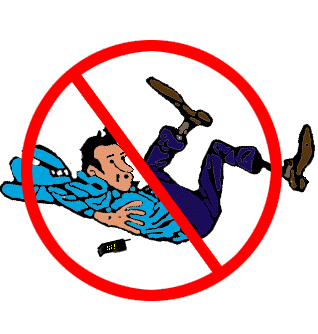Coatings: Epoxy, Urethane, Polyurea and More
As a general rule, most of our floor coatings start with an epoxy primer, then add an intermediate coat of epoxy and then when needed, a topcoat of urethane is applied. Epoxy is thicker than urethane so broadcast mediums (such as flake, chip or quartz) are generally applied to epoxy rather than urethane. With advancements in the coatings industry, there are options for polyurea, polyurethane and urethane coatings for faster cure time and greater UV resistance.

Traditional Layers for a Standard Epoxy Coating System
FOR MORE PICTURES OF OUR WORK CHECK OUT OUR GOOGLE PICS
Epoxy is available in clear as well as an array of other colors. The mixing system for epoxy is similar to paint but its characteristics and qualities are nothing alike. Epoxy floors are seamless, and their application process requires a wet edge application. For this reason, repairs are seldom applied without some degree of visibility.
All of our coatings have the option of including an antimicrobial additive for applications in the food and drug industry.
Epoxy is a thermosetting polymer which is available in three different formulations for a floor coating and sealer; water based, solvent based, and 100% solids. Depending on which product is used you can expect 3 mils to over 25 mils for a single coating for a concrete floor. These variances also allow for ease of application, special bonding characteristics, and VOC considerations.
What Are Solids?
“100% Solids” epoxy is a term used to describe the volume of solids in a coating system. It’s what is left over after the epoxy floor coating cures or dries. 100% solids will yield 100% dried material after the floor coating fully cures. For instance, 50% volume solids will yield 50% of the thickness after the floor coating fully dries. Most water-based epoxies are 30% to 40% volume solids. With an epoxy, you are not waiting for water to evaporate out of it in order for it to dry like you do with paint. With epoxy you are waiting for the molecular structure to change causing the product to harden.
In the opinion of Slip Free Systems the best epoxy formulations are 100% solids and provide for an extremely hard, thick, and impact resistant surface. That opinion is based on a standardized idea of what a cement slab should be. Not all slabs are created equal so different products might be a better solution for different jobs. Factors such as vapor transmission, the ground water table, atmospheric pressure, texture of the surface, contaminants and other environmental conditions all play a role.
Floor Preparation
With a properly prepared floor you no longer worry about hot tire pick up, scratching, and wear from abrasion. Though some epoxy formulas come with U.V. inhibitors, they will still eventually yellow or amber when exposed to sunlight for any length of time. When an epoxy manufacturer says their product is UV resistant, you can loosely compare it to the SPF of sunscreen. The higher the number the more protection; except that with epoxy there are no variable degrees of protection so this promise of UV resistance can not be relied on for optimal performance.
Some projects, require urethane because it is much more resistant to ultraviolet light than epoxy. Ultraviolet light is one of the factors that contribute to the products changing of color also known as “ambering”. Since urethane is UV resistant, the color of the product will remain the same for a longer period of time than when epoxy is used. Epoxy is not resistant to ultraviolet light so the products with epoxy often change color or amber over time.
It is said that epoxy offers higher strength than urethane when tested for tensile strength. When applied to surfaces, the epoxy component keeps them from moving. However, the epoxy substance can easily crack if it is applied to surfaces that require partial or frequent movement such as an elevated ramp or a ships deck. In other words, epoxy is not good to use on surfaces that inevitably need movement. As with most product lines, our manufacturers have products that are specially formulated for specific industry needs.

colors on this chart may differ slightly in person.



